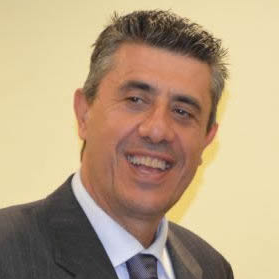Modern Circuits and Systems Technologies on Communications
A special issue of Technologies (ISSN 2227-7080). This special issue belongs to the section "Information and Communication Technologies".
Deadline for manuscript submissions: closed (1 November 2018) | Viewed by 30611
Special Issue Editors
Interests: antenna design; microwave components design; wireless communications; evolutionary algorithms; machine learning
Special Issues, Collections and Topics in MDPI journals
Interests: wireless communications; wireless power transfer and applications; optical wireless communications; communications for biomedical engineering; wireless security
Special Issues, Collections and Topics in MDPI journals
Special Issue Information
Dear Colleagues,
The 7th International Conference on Modern Circuit and System Technologies on Electronics and Communications (MOCAST 2018) will take place in Thessaloniki, Greece, 7–9 May, 2018. The MOCAST technical program includes all aspects of communications and network technologies from antenna design, propagation modeling, wireless communications, network systems and applications. This Special Issue aims at publishing extended versions of top-ranked papers in the area of communications from the conference. MOCAST is technically sponsored by IEEE. Potential topics include, but are not limited to, the following:
- Antenna design
- Propagation
- Communications systems
- Wireless communications
- Network systems
Dr. Sotirios Goudos
Prof. Dr. George K. Karagiannidis
Guest Editors
Manuscript Submission Information
Manuscripts should be submitted online at www.mdpi.com by registering and logging in to this website. Once you are registered, click here to go to the submission form. Manuscripts can be submitted until the deadline. All submissions that pass pre-check are peer-reviewed. Accepted papers will be published continuously in the journal (as soon as accepted) and will be listed together on the special issue website. Research articles, review articles as well as short communications are invited. For planned papers, a title and short abstract (about 100 words) can be sent to the Editorial Office for announcement on this website.
Submitted manuscripts should not have been published previously, nor be under consideration for publication elsewhere (except conference proceedings papers). All manuscripts are thoroughly refereed through a single-blind peer-review process. A guide for authors and other relevant information for submission of manuscripts is available on the Instructions for Authors page. Technologies is an international peer-reviewed open access monthly journal published by MDPI.
Please visit the Instructions for Authors page before submitting a manuscript. The Article Processing Charge (APC) for publication in this open access journal is 1600 CHF (Swiss Francs). Submitted papers should be well formatted and use good English. Authors may use MDPI's English editing service prior to publication or during author revisions.
Related Special Issue
- Modern Circuits and Systems Technologies on Electronics in Technologies (7 articles)






